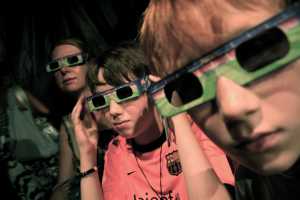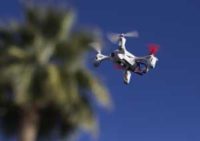Author Interviews, Pharmaceutical Companies, Technology / 29.11.2017
Digital Health About Connection, Collaboration and Integration
MedicalResearch.com Interview with:
 Mr. David Moore MBA
Senior Vice President, Commercial
Novo Nordisk
Mr. David Moore presented the keynote presentation “Breaking Through Barriers in Innovation” at the 4th Annual HITLAB Innovators Summit, NYC November 28, 2017.
MedicalResearch.com: How did you become interested in incorporating technological advances into the sales and marketing end of pharmaceutical delivery?
Response: Part of our message today is that we understand that there is an opportunity to improve outcomes if we have a better focus on collaboration and integration through engagement with the patient rather than through medications alone. We continue to innovate in diabetes pharmaceutical care but are also focusing more on meeting the patient in their journey through everyday life.
The opportunity to connect, collaborate and integrate is what digital health is all about.
As manufacturers, we are still early in the integration process. When we think about technological changes from the patient’s perspective, health care has become much different. The patient no longer just goes to the doctor’s office for a conversation or opinion, with the doctor keeping all the notes. Now the patient has access to a broad range of medical information and usually their own medical records. There is an element of needing things to be user-friendly. As with any consumer product or service with choices, if the choice isn’t user-friendly, the consumer won’t use it. We are looking for ways to make the delivery of pharmacologic products user-friendly to both the patient and provider.
(more…)
Mr. David Moore MBA
Senior Vice President, Commercial
Novo Nordisk
Mr. David Moore presented the keynote presentation “Breaking Through Barriers in Innovation” at the 4th Annual HITLAB Innovators Summit, NYC November 28, 2017.
MedicalResearch.com: How did you become interested in incorporating technological advances into the sales and marketing end of pharmaceutical delivery?
Response: Part of our message today is that we understand that there is an opportunity to improve outcomes if we have a better focus on collaboration and integration through engagement with the patient rather than through medications alone. We continue to innovate in diabetes pharmaceutical care but are also focusing more on meeting the patient in their journey through everyday life.
The opportunity to connect, collaborate and integrate is what digital health is all about.
As manufacturers, we are still early in the integration process. When we think about technological changes from the patient’s perspective, health care has become much different. The patient no longer just goes to the doctor’s office for a conversation or opinion, with the doctor keeping all the notes. Now the patient has access to a broad range of medical information and usually their own medical records. There is an element of needing things to be user-friendly. As with any consumer product or service with choices, if the choice isn’t user-friendly, the consumer won’t use it. We are looking for ways to make the delivery of pharmacologic products user-friendly to both the patient and provider.
(more…)
 Mr. David Moore MBA
Senior Vice President, Commercial
Novo Nordisk
Mr. David Moore presented the keynote presentation “Breaking Through Barriers in Innovation” at the 4th Annual HITLAB Innovators Summit, NYC November 28, 2017.
MedicalResearch.com: How did you become interested in incorporating technological advances into the sales and marketing end of pharmaceutical delivery?
Response: Part of our message today is that we understand that there is an opportunity to improve outcomes if we have a better focus on collaboration and integration through engagement with the patient rather than through medications alone. We continue to innovate in diabetes pharmaceutical care but are also focusing more on meeting the patient in their journey through everyday life.
The opportunity to connect, collaborate and integrate is what digital health is all about.
As manufacturers, we are still early in the integration process. When we think about technological changes from the patient’s perspective, health care has become much different. The patient no longer just goes to the doctor’s office for a conversation or opinion, with the doctor keeping all the notes. Now the patient has access to a broad range of medical information and usually their own medical records. There is an element of needing things to be user-friendly. As with any consumer product or service with choices, if the choice isn’t user-friendly, the consumer won’t use it. We are looking for ways to make the delivery of pharmacologic products user-friendly to both the patient and provider.
(more…)
Mr. David Moore MBA
Senior Vice President, Commercial
Novo Nordisk
Mr. David Moore presented the keynote presentation “Breaking Through Barriers in Innovation” at the 4th Annual HITLAB Innovators Summit, NYC November 28, 2017.
MedicalResearch.com: How did you become interested in incorporating technological advances into the sales and marketing end of pharmaceutical delivery?
Response: Part of our message today is that we understand that there is an opportunity to improve outcomes if we have a better focus on collaboration and integration through engagement with the patient rather than through medications alone. We continue to innovate in diabetes pharmaceutical care but are also focusing more on meeting the patient in their journey through everyday life.
The opportunity to connect, collaborate and integrate is what digital health is all about.
As manufacturers, we are still early in the integration process. When we think about technological changes from the patient’s perspective, health care has become much different. The patient no longer just goes to the doctor’s office for a conversation or opinion, with the doctor keeping all the notes. Now the patient has access to a broad range of medical information and usually their own medical records. There is an element of needing things to be user-friendly. As with any consumer product or service with choices, if the choice isn’t user-friendly, the consumer won’t use it. We are looking for ways to make the delivery of pharmacologic products user-friendly to both the patient and provider.
(more…)



